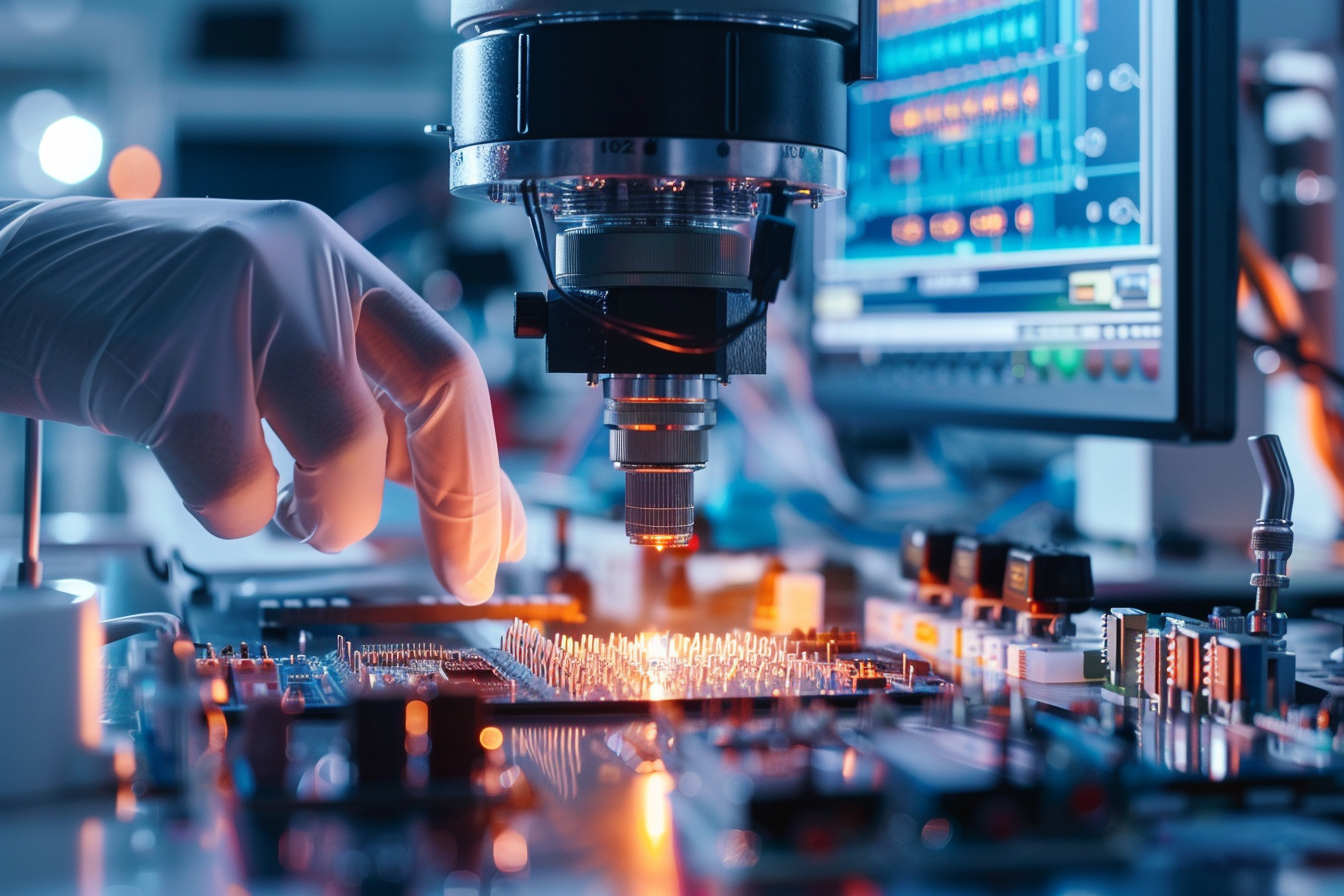use cases and similar projects
Process Automation
Automate assembly lines and testing procedures. Implement AI-driven robots and inspection systems for enhanced precision and speed.
Predictive Maintenance
Predict equipment failures before they occur. Use machine learning to schedule maintenance, reducing downtime and extending machinery life.
Supply Chain Optimization
Streamline inventory management and logistics. Apply predictive analytics for demand forecasting and optimized resource allocation.
Smart Manufacturing Processes
Implemented AI algorithms to streamline production lines, enhancing efficiency and reducing waste in manufacturing environments.
Visual Inspection Automation
Engineered computer vision systems to automate quality control processes in manufacturing, enhancing accuracy and efficiency.
Does your AI-powered sector speak to you?

our AI services

Innovate Smarter, Not Harder
The integration of AI within the electronics and electrical equipment industry marks a pivotal shift towards smarter manufacturing, maintenance, and quality control. As technology evolves, the adoption of AI-driven solutions is not just an advantage but a necessity to stay ahead. The future promises more autonomous production lines, self-diagnosing machinery, and products that set new standards in efficiency and reliability. While the path forward includes challenges such as adapting to new technologies and ensuring cybersecurity, the potential for transformative improvements is immense. Stay competitive by embracing AI in your operations now – remember, the pace of innovation waits for no one, and your industry peers are already exploring these advancements.
Our AI services for smart and sustainable agriculture
free discovery meeting

Hi,
I am Keven.
I’m the Customer Success Director at Updata. What I love is taking my clients’ vague ideas and helping them translate them into powerful solutions.
So, shall we talk?
Select a time that works best for you to explore AI with me.

